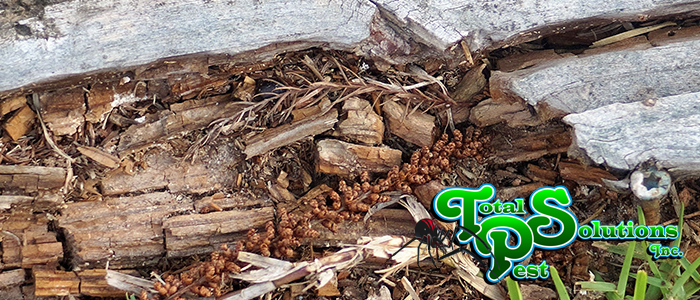
There are several species of squirrel, but tree squirrels are the most common nuisance for homeowners because they inhabit attics and garages and cause damage. They often gnaw on the exterior and interior walls, timbers, cables, and electric wiring. They have been known to short out electric power transformers due to their activities around power lines. This makes squirrel control a particularly important component of pest control. Read on to learn everything you need to know about squirrel control for your home.
Squirrels are typically discovered because they make a lot of noise in the area they inhabit. The gray squirrel is the most common structure-infesting squirrel species. Squirrels are abundant in the wild because their numbers far exceed the number of predators. The large population and decreasing natural habitat due to construction in many areas cause them to seek shelter in houses. The chilly months of fall and winter cause squirrels to seek the warmth that is found in attics.
Getting Rid of Squirrels
A consistent squirrel trapping routine is the best recommended way for squirrel control. Here are a few recommendations for control:
- Removal of any diet source: bird seed for example, because they attract the squirrels is the first order of business.
- Using gutter guards and covering downspouts will reduce the number of squirrels that are entering through the rooftop and facia boards.
- There are no poison baits on the market that squirrels will eat and die, except Ditrac Ground Squirrel Bait that is only made to control the California Ground Squirrel (found in western states). Typical rodent control bait for mice and rat control will not work against other squirrels.
- Live trapping method of trapping squirrels is the only way to remove unwanted squirrels. Catching a squirrel is really the only way to get rid of squirrels in your attic, once they have chewed holes. It is important to seal up and repair all entry points after trapping the squirrels, so they no longer have access.
- Locate the trap along the path of entry and places of known foraging activity.
- Go about 4-5 miles away to relocate the squirrels, or it will find its way back to your area.
- You may want to consider local ordinances for trapping squirrels, in that they differ. Sometimes a professional trapper with a nuisance control license is needed to not only capture the squirrel but relocate it as well.
Types of Traps
Wire-cage traps and box traps can be used to capture squirrels alive. Prebait the traps by tying the doors open for two to three days to get squirrels accustomed to feeding in the traps. This practice will make it easier to capture a large number of squirrels in one area. Good baits are orange and apple slices, walnuts or pecans removed from the shell, and peanut butter. Other foods familiar to squirrels also may work well, such as corn or sunflower seeds.
The Process
After prebaiting, set the traps and check them twice daily. It is most efficient and humane to check the traps in the morning and evening. Once the animal has been trapped and removed from the house or other building and the entrance holes closed, it may be released in the yard. However, make sure to block or eliminate any access routes back to vulnerable areas of the building.
continue reading
Related Posts
Holiday Pest-Free Homes in Winter Haven: Avoiding Cargo Pests As
Auburndale’s Mole Cricket Damage: Repairing Turf Before Frost As the
Lakeland’s Fall Termite Swarms: Early Detection Tips As the summer






